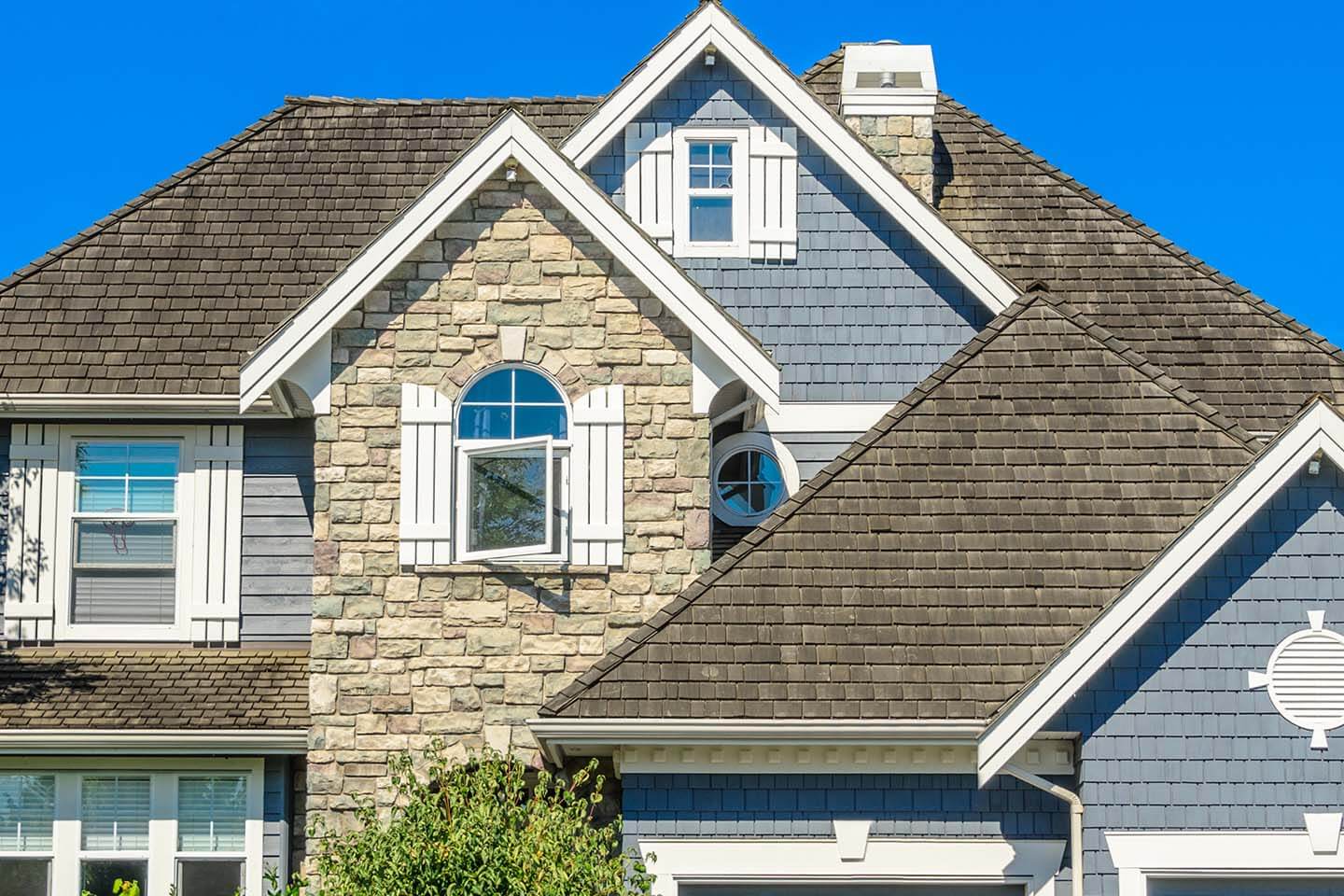
Image Source: Capital City Home Improvement
Maintaining and enhancing a property involves various projects, each with its own financial and tax implications. Among these, capital improvements play a crucial role. Yet, many homeowners find themselves puzzled by what qualifies as a capital improvement and how it might affect their property value and tax situation. This article delves into the realm of capital improvements, specifically focusing on whether a new roof qualifies as such.
Capital improvements are more than just repairs; they add value, prolong the life, or adapt a property for a different use. Understanding what constitutes a capital improvement is essential for homeowners looking to optimize their investments and potentially benefit from tax advantages.
In this comprehensive guide, we explore the nuances of capital improvements, how they differ from repairs, and the importance they hold for homeowners. This foundational knowledge is vital for anyone considering significant upgrades to their property.
What is a Capital Improvement?
A capital improvement is an addition or alteration to a property that enhances its value, extends its useful life, or adapts it for a different use. Unlike regular repairs, which simply restore a property to its original condition, capital improvements contribute to the long-term value of the home.
Characteristics of Capital Improvements
- Value Enhancement: Projects that increase the market value of a property.
- Extended Longevity: Improvements that prolong the lifespan of a property or its components.
- Functional Adaptation: Changes that adapt the property for a different or more efficient use.
Differentiating Repairs from Improvements
- Repairs: Routine maintenance tasks such as fixing a leaky faucet or patching a roof.
- Improvements: Installing a new roof, adding a room, or modernizing a kitchen.
Understanding these distinctions helps homeowners make informed decisions about property investments and their potential tax benefits.
The Importance of Capital Improvements for Homeowners
Capital improvements are not just about enhancing a property’s aesthetics; they offer tangible benefits that can significantly impact a homeowner’s financial standing. Recognizing these advantages ensures that homeowners can leverage improvements strategically.
Financial Benefits
- Increased Property Value: Capital improvements can boost the resale value of a home, making it more appealing to potential buyers.
- Tax Advantages: Certain improvements may qualify for tax deductions or credits, reducing the overall tax burden.
Long-term Investment
Investing in capital improvements is a strategic move that can yield substantial returns over time. Whether it’s through increased property value or reduced energy costs, these enhancements provide long-term financial benefits.
Enhancing Quality of Life
Beyond financial gains, capital improvements can significantly enhance a homeowner’s quality of life. Upgrades such as a modernized kitchen or improved insulation can make a home more comfortable and efficient.
Is a New Roof a Capital Improvement?
When considering whether a new roof qualifies as a capital improvement, it is essential to evaluate the nature and purpose of the installation. A new roof can indeed be classified as a capital improvement if it meets specific criteria.
Criteria for New Roofs as Capital Improvements
- Value Addition: Does the new roof increase the home’s market value?
- Extended Lifespan: Does the roof significantly extend the life of the property?
- Functional Change: Does the new roofing material offer better insulation or efficiency?
Case Scenarios
- Replacing with Similar Material: Simply replacing shingles with similar materials might not qualify as an improvement.
- Upgrading to Premium Material: Installing a metal roof or adding solar panels could qualify as a capital improvement due to enhanced functionality and efficiency.
Importance of Proper Evaluation
Homeowners must carefully evaluate the scope and impact of their roofing project to determine its classification. Consulting with a tax professional or property appraiser can provide clarity and guidance.
How to Determine if Your Roof Replacement Qualifies
Determining whether your roof replacement qualifies as a capital improvement involves a detailed assessment of the project’s scope and impact on the property. This evaluation ensures that homeowners can accurately classify their investment for tax purposes.
Steps to Evaluate
- Assess the Scope: Understand whether the replacement is a simple repair or an upgrade.
- Consult Professionals: Engage with contractors and tax advisors to determine the nature of the work.
- Review Tax Guidelines: Familiarize yourself with IRS regulations regarding property improvements.
Documentation and Evidence
Maintaining thorough documentation of the project is crucial. This includes:
- Receipts and Invoices: Proof of purchase and labor costs.
- Contracts and Blueprints: Detailed plans and agreements with contractors.
- Photographic Evidence: Before-and-after photos showcasing the improvement.
Impact on Property Value
Conducting a property appraisal after the completion of the roof replacement can provide insights into the value addition. This appraisal serves as evidence of the improvement’s impact, aiding in tax assessments and future resale considerations.
Tax Implications of Capital Improvements
The tax implications of capital improvements are significant and can influence a homeowner’s financial planning. Understanding these implications helps homeowners make informed decisions about property investments.
Deductibility and Depreciation
- Non-Deductible: Most capital improvements are not immediately deductible as expenses.
- Depreciation: They may be depreciated over time, reducing taxable income gradually.
Impact on Property Taxes
Capital improvements can increase a property’s assessed value, potentially leading to higher property taxes. Homeowners should anticipate these changes and plan accordingly.
Tax Credits and Benefits
Certain improvements, especially those related to energy efficiency, may qualify for tax credits. For instance, installing solar panels or energy-efficient roofing materials can provide immediate tax benefits.
Benefits of Classifying a New Roof as a Capital Improvement
Classifying a new roof as a capital improvement offers several advantages that go beyond immediate financial gains. These benefits can have lasting impacts on a homeowner’s financial health and property value.
Increased Resale Value
A new roof classified as a capital improvement can significantly boost a property’s resale value. Prospective buyers often view a new roof as a major selling point, enhancing the property’s marketability.
Tax Benefits
By classifying the roof replacement as a capital improvement, homeowners may benefit from tax deductions over time through depreciation. This can lead to substantial savings in the long run.
Enhanced Property Longevity
A new roof not only protects the home but also extends its lifespan. This enhancement ensures that the property remains in good condition, reducing the need for frequent repairs and maintenance.
Examples of Other Capital Improvements
Understanding what constitutes a capital improvement extends beyond roofing projects. Various other enhancements can qualify, each contributing uniquely to a property’s value and functionality.
Common Capital Improvements
- Kitchen Remodels: Upgrading appliances, countertops, and cabinetry.
- Bathroom Renovations: Installing new fixtures, tiles, and plumbing.
- Room Additions: Expanding living space with additional rooms or extensions.
Energy-Efficient Upgrades
- Solar Panels: Installing solar systems to reduce energy costs.
- High-Efficiency Windows: Replacing old windows with energy-saving models.
Structural Enhancements
- Foundation Repairs: Major work that stabilizes and strengthens the home.
- Landscaping Projects: Significant changes that improve curb appeal and functionality.
Tips for Proper Documentation and Reporting
Proper documentation and reporting are crucial when undertaking capital improvements. These practices ensure compliance with tax regulations and facilitate smooth transactions during property sales.
Key Documentation Practices
- Maintain Detailed Records: Keep all receipts, invoices, and contracts associated with the project.
- Photographic Evidence: Capture before-and-after images to document the improvement’s impact.
- Appraisals and Assessments: Obtain professional evaluations to substantiate the value addition.
Reporting and Compliance
- Consult Tax Professionals: Engage with accountants or tax advisors to ensure accurate reporting.
- Understand IRS Guidelines: Familiarize yourself with relevant tax codes and regulations.
- Regular Updates: Keep records updated and organized for easy access during tax season or property transactions.
Adhering to these practices safeguards homeowners against potential audits and ensures that they can fully benefit from their investments.
Conclusion

Understanding whether a new roof qualifies as a capital improvement is a vital consideration for homeowners aiming to maximize their property’s value and financial benefits. By carefully evaluating the scope and impact of their roofing projects, homeowners can make informed decisions that align with their long-term goals.
Capital improvements, including roof replacements, offer significant advantages, from increased property value to potential tax benefits. Proper documentation and compliance with tax regulations further enhance these benefits, providing homeowners with peace of mind and financial security.
For homeowners contemplating substantial property upgrades, now is the time to act. Consult with professionals, assess the potential impacts, and take steps to ensure your investments are classified correctly. Embrace the opportunity to enhance your home and secure its future value.
FAQ
1) What defines a capital improvement for a property?
A capital improvement enhances value, extends life, or adapts property use. Unlike repairs, it contributes to long-term value.
2) How can a new roof qualify as a capital improvement?
A new roof qualifies if it adds value, extends lifespan, or offers better efficiency. Upgrading to premium materials can meet these criteria.
3) What are the financial benefits of capital improvements?
Capital improvements can increase property value, offer tax advantages, and provide long-term financial gains through enhanced efficiency and reduced maintenance.
4) What documentation is needed for capital improvements?
Maintain receipts, contracts, and photos. Conduct property appraisals to document value addition, aiding in tax assessments and resale considerations.